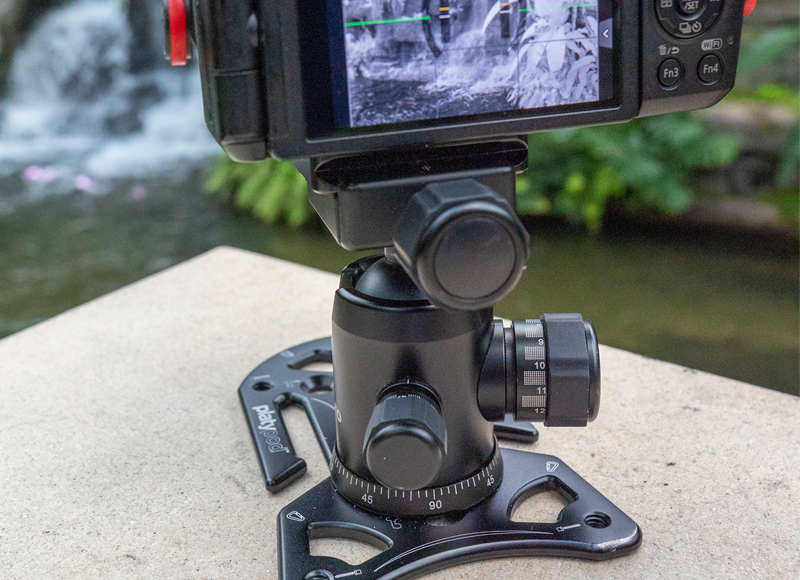by Bob Coates
Platypod might sound like a strange name for a photography tool, but this family-owned business has a reputation for making quality products for professional photographers at affordable prices. About a year and a half ago, I bought one and promptly put it away. Then I broke it out and started finding a use for it… then more uses… and even more. When the Platypod people noticed how much I was using it, they asked me to share some of my images for their marketing. This thing is a pretty cool tool.
This versatile piece of equipment is as useful as the user’s creativity and is designed to get steady shots in tight spots where standard tripods can never go. It works with most any tripod head for amazing support. It’s flat, fits in your camera bag, and is strong enough to hold heavy cameras and lights. Plus, it’s as stable as the surface it is on. They can be bolted to a wall or ceiling to provide a rock-solid base for mounting and can be used with all sorts of different cameras, from GoPro action cams to mirrorless cameras to DSRLs.
There are two sizes of Platypod to accommodate your particular needs. The Platypod Ultra is ideal for compact cameras and lightweight DSLRs with small-to-medium lenses. It is flat, light, compact and strong. At the size of a smartphone and only 3.2 ounces, the Ultra fits in your pocket and will hold equipment up to about two pounds. The Platypod Max is ideal for heavy DSLRS, large lenses, and full-size video cameras. At the size of a mini tablet and weighing only 13 ounces, the Max fits in most any camera bag. If your choice of equipment includes long telephoto or heavy macro lenses, the Platypod Max is recommended.
Platypod Ultra is now the tripod that hangs from my Think Tank Mirrorless Mover 20 waist pack when I go hiking. For a long time I was foregoing camera support on my hikes trying to keep the weight down. Platypod Ultra comes in under four ounces and 10.4 ounces with the recommended Benro ball-head that supports 11 pounds. Not taking up any space inside my bag makes it a no-brainer for me to bring along. If you have heavier gear you can mount a larger ball-head and or move up to the Platypod Max which is larger that the Ultra.
The small tripod allows the camera to be put in places that are almost impossible when using a full size camera support.
The image of Castle Rock in Sedona was made with the Lumix GX85. Two images from a time-lapse sequence from night to sunrise were blended together. To get the shot, the Platypod was rested on a fence post.
Lugging a tripod through the countryside is often impractical or inadvisable. The Platypod is the perfect solution.
Another versatile use of the Platypod is mounting it to a tripod and using the plate to support other equipment. The image of the cactus flower was made with an Olympus OMD E-M1 Mark III. In this arrangement, the plate supported Litra LED lights with goosenecks screwed into the threaded holes.
Point of view can make a huge difference in how a scene is perceived. If you’ve ever been in a situation where you needed to shoot from a very low point of view and didn’t particularly relish the idea of being face-down in the dirt, the Platypod offers a much more desirable solution.
Being able to get the camera very close to the ground with the Platypod, I made a five inch ledge look like a large waterfall. Using a wide-angle lens, a slow shutter speed, and in-camera ND filter setting on the Olympus OMD E-M1X, I was able to make the trickle of water seem like a flow.
